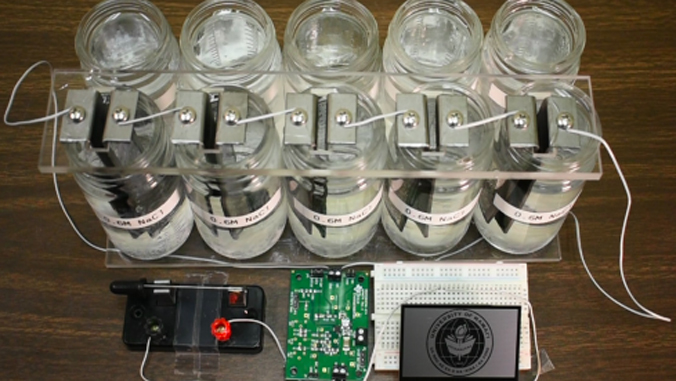
A game-changing discovery by University of Hawaiʻi at Mānoa researchers reveals a more efficient method of extracting energy when freshwater and saltwater mix. The findings by College of Engineering Interim Associate Dean and Professor David Ma and research associate Jian Yu have been published in Nano Energy.
Previous approaches
Millions of gallons of freshwater naturally flow into oceans every day. Mixing freshwater and saltwater releases a significant amount of energy, also known as Gibbs free energy. One cubic meter of freshwater flowing into the ocean will release the same amount of energy as one cubic meter of water falling 270 meters.
Currently, tapping into this energy source requires specialized and expensive membranes to generate the pressure to drive a turbine, or separate the positive and negative ions in the waters directly. Decades of research and development have shown it is very challenging, if not impossible, for the membrane-based approaches to become a net-gain process.
“As the membrane-based methods are rapidly approaching technological ceilings, people start to question the promises initially held by these methods,” Ma said. “In this research, we propose a new concept for harvesting blue energy without the need of membranes.”
New discovery
The discovery by Ma’s group illustrates a new way to generate electricity by mixing water with different salinity levels. When the water passes through a porous electrode (a device used to capture energy), the team discovered that the properties of the nanopores (tiny openings) in a porous electrode, dictate the electrode’s response to the salinity difference. Two electrodes made with identical material, but with different nanopore distributions, will respond differently to the same salinity gradient and allow energy to be efficiently extracted for electricity generation. This patent-pending technology has attracted interest from the industry worldwide.
“We have successfully demonstrated, for the first time, that manipulating the nano structure of porous electrodes can lead to effective power production at a large scale,” Ma said. “We anticipate this work will pave the way for transformative innovations in renewable energy and will open doors to new research areas in materials science and engineering.”
UH has executed a licensing agreement with Polū Energy, a Hawaiʻi-based startup company, to further develop this technology for commercialization.
This research is an example of UH Mānoa’s goal of Excellence in Research: Advancing the Research and Creative Work Enterprise (PDF), one of four goals identified in the 2015–25 Strategic Plan (PDF), updated in December 2020.

